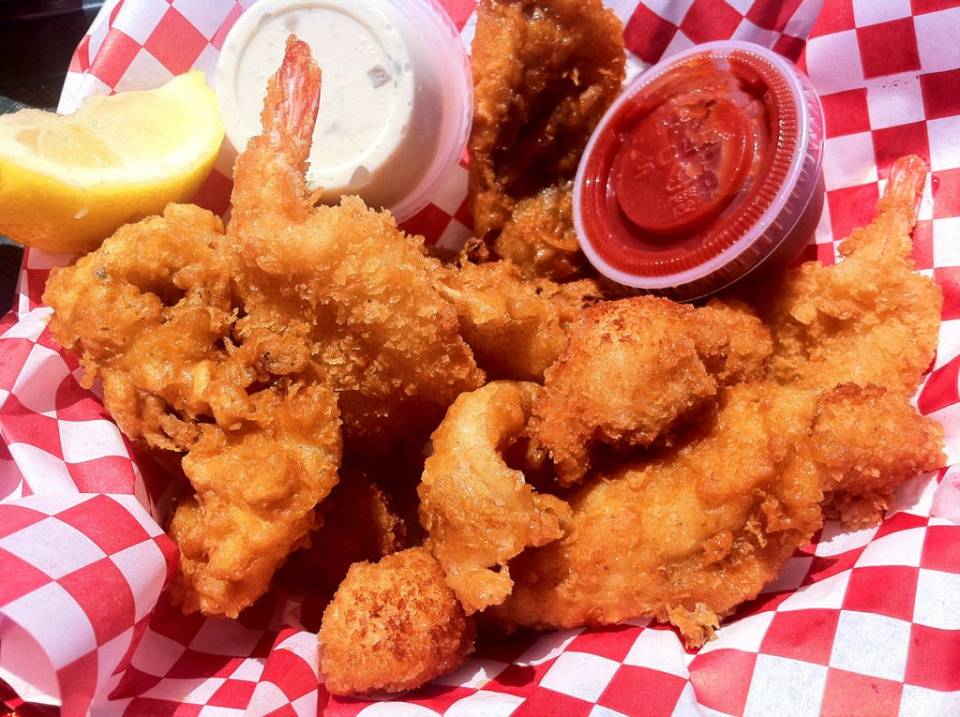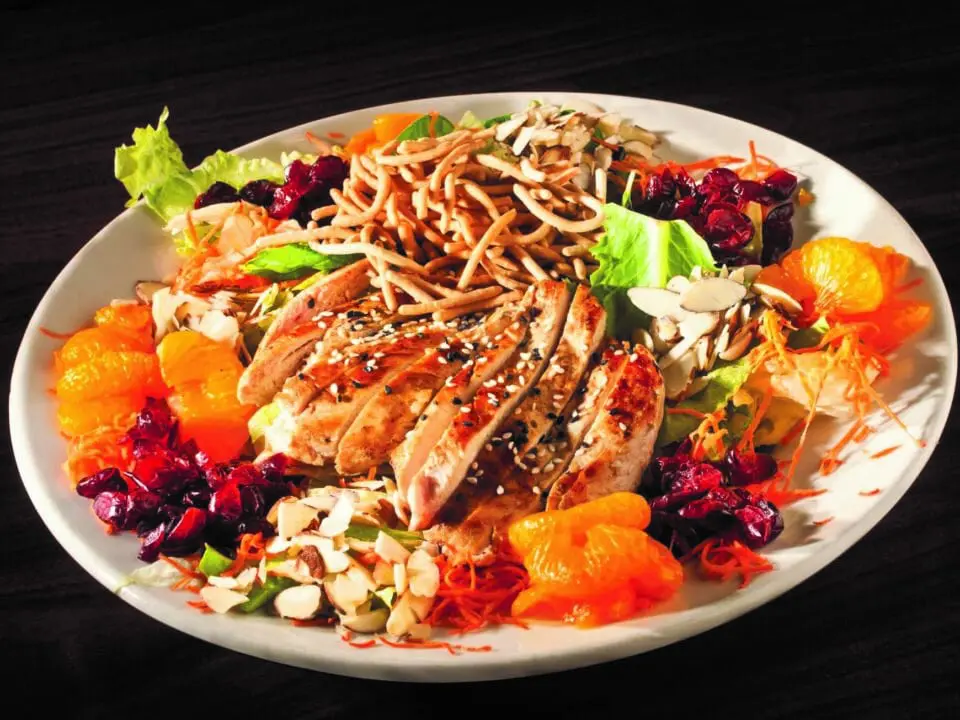
Fried Seafood That Will Keep You Warm
October 2, 2021
Late Season Fishing In The Outer Banks
December 10, 2021
Fried Seafood That Will Keep You Warm
October 2, 2021
Late Season Fishing In The Outer Banks
December 10, 2021Welcome to whiskey season, everyone. It’s a grand time of year, where food is plentiful, friends are friendlier, clothes more cozy, and whiskey flows like a mountain stream after a heavy spring rain. Hell, it almost makes you want to throw on some Uggs and age some whiskey in a pumpkin-spiced barrel. (Don’t you f***ing do it, Jim Beam!).
While we may disagree on if we should pumpkin-ize everything this time of year, we can all form a bond over a love of a good, strong, even beautiful drink called whiskey. But whiskey is a catch-all for a ton of different types of artfully-crafted spirits, spanning the world and connecting people one sip at a time. It’s honestly a lot to keep up with. Is it a rye or a bourbon? If it’s a bourbon, is it a Tennessee whiskey? What’s the difference between a single malt and a blended whiskey? It’s almost more head-spinning than having too much whiskey.
So, in honor of whiskey weather, we’re giving you an Irish and American whiskey “cheat sheet” in the hopes that it’ll either 1) help you impress your friends and/or family during the holidays or 2) get you laid at a Friendsgiving.
Whiskey vs. Whisky
You may notice that sometimes there’s a missing “e” in some spellings of whiskey. What’s up with that? What it boils down to, mainly, is region and how each chooses to spell it. Does it really matter? No, and if some tries to tell you differently, they’re probably a dick not a nice person. Here’s a general rule:
- Whiskey = spirits from Ireland or the United States.
- Whisky = spirits from Scotland, Canada, and Japan.
(Yes, there are some variations to this, but don’t get granular, man.)
Need to Know Whiskey Terms
- Charring: setting fire to the inside of wood barrels.
- Drunk: what happens when you drink too much whiskey.
- Fermentation: when yeast turns sugar into booze.
- Malt: In Laymen’s terms, it’s heated/roasted germinated grain. When you heat the grain, it releases some awesome enzymes that allows fermentation to go down.
- Mash: mixture of grains and water before yeast is added for fermentation.
- Responsible: what you should be when drinking whiskey. Yeah, we side with your mom on this one (mostly).
- Straight whiskey: American whiskey aged for more than two years.
One of the most popular and beloved whiskey styles on the planet (and we’re not just saying that because we’re an Irish pub), Irish whiskey is straight up perfect for fall and winter weather. There are currently only 18 working distilleries in Ireland, and some are so new that their products haven’t hit the shelves. There used to be a ton in the 19th century — some illegal — but most shut down because, you know, famine.
Yeah, so only 18 — sounds like you could hit all of them in one day. Challenged accepted? Totally.
There are four distinct types of Irish whiskey: single malt, single pot, grain, and blended. What sets Irish whiskey apart from its Scottish counterpart is it’s usually distilled three times instead of two. (Again, there are exceptions to this rule, but just chill, dude.)
Quick shots of knowledge:
- 100% malted barley.
- Distilled in a pot still in one distillery.
What it tastes like:
- Like Carmen Miranda’s hat, if she grew up working a farm in Northern Ireland. Yes, this is a good thing.
A good place to start:
- Bushmills 10 – The oldest licenced distillery in the world got this one so right.
- Teeling Single Malt – Tasting notes say it tastes like strawberries and cream. Yeah, we can get down with that.
A good place to finish:
- Bushmills 21 – Good things come to those who wait… 21 years.
Quick shots of knowledge:
- Mixture of malted and unmalted barley.
- Distilled in a pot still in one distillery.
- Single Pots were the popular crowd in Ireland until blends came along. Like, totally unfair.
What it tastes like:
- If vanilla ice cream hosted a party and the only RSVPs it got were from dried fruit and roasted nuts. Oh, and if they got drunk on bourbon the night before. (Note: a lot of Irish whiskeys — and whiskeys outside of the U.S. — are aged in old bourbon casks.)
A good place to start:
- Green Spot – This whiskey won’t let you down. Even if you’re mean to it.
A good place to finish:
- Redbreast 15 – Reading James Joyce? This whiskey is as complex and awesome as he is.

Quick shots of knowledge:
- Distilled in a column/Coffey still instead of a pot.
- Mostly made just for use in blended whiskey.
What it tastes like:
- You know those dried fruits in Special K cereal? That, except, you know… whiskey.
A good place to start:
- Teeling Single Grain – Fun fact: it’s aged in California cabernet casks. What!?! Get outta here. We’re so down.
- Glendalough Single Grain – Ireland’s first “craft” distillery nailed it with this single grain.
A good place to finish:
- Greenore Single Grain Small Batch – It’s like Cirque du Soleil: totally balanced and weirdly sexy.

Quick shots of knowledge:
- The most common and popular of Irish whiskeys.
- Mixture of grain and single malt and/or single pot whiskeys.
What it tastes like:
- It tastes like you’re a rockstar, taking down the f***ing man! But, like a rockstar who calls his mom once in awhile.
A good place to start:
- Jameson – The homecoming king of Irish whiskey… and you voted for him.
- Tullamore Dew – Maybe the most fun to say of all the Irish whiskeys. Also, it’s damn good.
A good place to finish:
- Midleton Very Rare – Listen, sometimes you just gotta be a baller.
There are three main players in the American whiskey game: bourbon, rye, and Tennessee whiskey. We don’t discriminate, but each have very distinctive tastes and have a different production process.

The American jewel when it comes to spirits. Let’s start off by debunking that all bourbons must be produced in Kentucky. While it’s true for Champagne, it’s not for bourbon. Although most of the bourbons produced do come from Kentucky, along with most of the one-and-done college basketball players – hey-oh!
Quick shots of knowledge:
- Mash must be at least 51% corn.
- Aged in new, fire-blasted (aka charred) oak barrels.
What it tastes like:
- If Karo Syrup was a dude, and spent way too much time around the campfire.
A good place to start:
- Bulleit Bourbon – So much delicious (and kind on your wallet).
A good place to finish:
Pappy Van Winkle– Ha! Just kidding. Good luck getting a bottle.- Willet Pot Still Reserve – Dude. It’s out of control and totally worth the price tag.

The misunderstood, yet crazy artistic, little brother of bourbon. If Harry Crews were a spirit, it’d be rye whiskey.
Quick shots of knowledge:
- Mash must be at least 51% rye.
- Aged in new, fire-blasted oak barrels.
What it tastes like:
- If bourbon had a really tough breakup, moved to Central America, and got a neck tattoo. Not tracking? Ugh. Fine. It’s got more of an edge and some spicier notes.
A good place to start:
- Koval Rye – You’ll never want another sub-$50 whiskey again.
A good place to finish:
- Whistle Pig 10 Year – We’re not going to call it the pinnacle, but it’s damn close.
- High West Double Rye – This is a great, affordable bottle to have handy. It’s a bit intense and pretty complex.

Fun fact: it’s made in Tennessee. Go figure.
Quick shots of knowledge:
- Same production style of bourbon, except filtered through charcoal.
- Charcoal filtration is known as the Lincoln County Process.
What it tastes like:
- You know how your dad drinks bourbon and grills way too much meat on Saturday afternoon? Yeah, it tastes like that.
A good place to start:
- Jack Daniels – The most famous of all whiskey dudes.
A good place to finish:
- George Dickel Barrel Select – Super smooth and the epitome of small batch.
Now that you’re armed with a working knowledge of whiskey, it’s time to get out there and taste it! But how? Well, kind of like wine.
We’re curious why wine tastings get to have all the fun of cool glassware and swanky (and totally badass) swirling moves? They don’t, damnit! Listen, tasting whiskey is an art and you can have all the fun of wine tasting, just, you know… with whiskey.
Check it: here’s a super easy guide to tasting whiskey. Yes, it matters. No, we’re not going to side-eye you for just shooting a dram of Jameson.
- If you can grab a snifter glass, you should. This is important because A) it let’s you do that badass swirl with the whiskey and B) it concentrates the nose of the whiskey. It’s science.
- Do sniff the whiskey, but we caution you to not shove your nose in the glass like you would with wine. Why? Just do it and you’ll know. #highproof
- Take a very small first sip. Let’s be honest here – whiskey is whiskey and it can be intense at first. By taking a small sip, you’re telling your tastebuds: “Yo! Listen up. Get your big boy pants on because it’s going down.” Once your tastebuds are prepared, you’ll be able to notice subtleties in the spirit.
- Don’t be afraid to add some water. A little water can open up the whiskey and, in fact, some distillers recommend drinking whiskey this way. Our tip: get the water on the side so you can see the difference. Plus, hydration… right?




